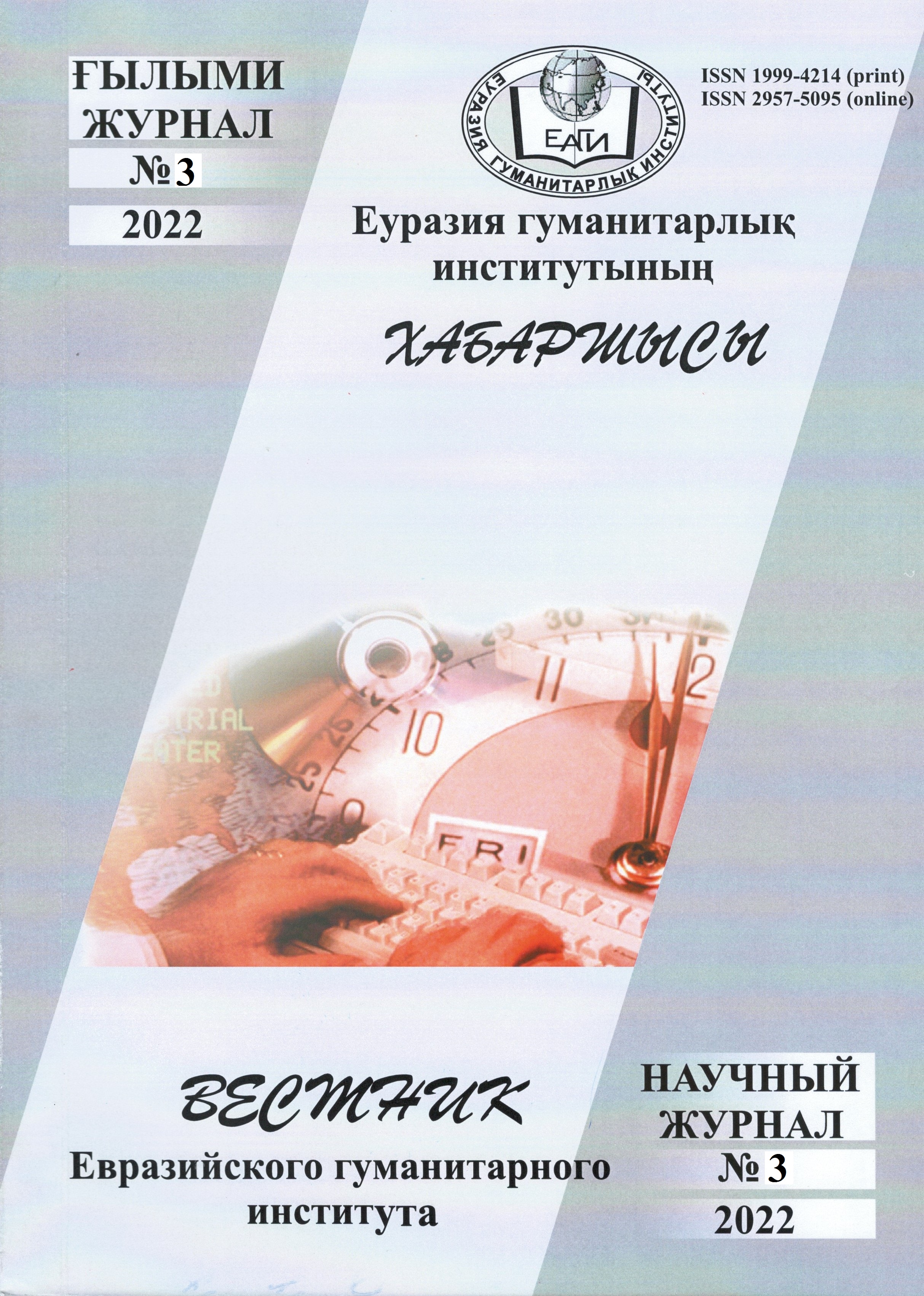ПРЕЦЕДЕНТНЫЕ ТОПОНИМЫ ВЕЛИКОГО ШЕЛКОВОГО ПУТИ
Ключевые слова:
топоним, прецедент, фоновое знание, имя собственное, имплицитная информация, носитель языка, языковая единица, атрибут.Аннотация
В статье рассматриваются прецедентные топонимы Великого шелкового пути, которые составляют основной лингвокультурный фонд казахского общества и занимают свое место в создании топонимической картины мира в познаний языковой личности, как важный фонд познания членов общества.
Цель статьи - показать особенности употребления прецедентных топонимов Великого шелкового пути в языке и тем самым определить знания носителя языка в создании топонимической картины мира.
Исследовательская работа проведена в когнитивном направлении. Автор классифицирует прецедентные топонимы как уникальную лингвокультурную единицу, которая передается по наследству из поколения в поколение и формирует топонимическую картину мира носителя языка.
В ходе исследования внимание было обращено на особенность прецедентных топонимов Великого шелкового пути, которые участвуют в регуляции коммуникативных норм в познании окружающей среды носителем языка, как важная единица. Особое значение придается когнитивной функции, выполняемой как ассоциация и др. в раскрытии национального кода, использования как стандарт при наименовании, согласно фоновому знанию и познанию, заключенных в прецедентных топонимах. Анализируется функция прецедентных топонимов в исторических текстах, художественных произведениях, их прагматический потенциал, определяется их место как средства передачи восприятия мира, накопленных веками в знаниях народа.
Утверждается, что прецедентные топонимы Великого шелкового пути являются основными лингвокультурными единицами, формирующими базу знаний нации и несущих культурную информацию, и раскрываются культурные коды, стоящие за имплицитной информацией. Сделанные выводы обосновываются когнитивным, сравнительно-описательным методами и доказаны конкретными примерами. Помимо исторического текста, взяты цитаты из произведений известных поэтов и писателей.
Практическая значимость статьи заключается в том, что ее основные результаты могут быть использованы в теоретических курсах, таких как ономастика, когнитивная лингвистика, лингвокультурология, сравнительная типология, а также в семинарах по обучению казахскому языку.


